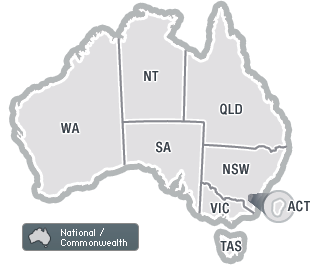The costs of accurately measuring a work building's indoor environmental quality (IEQ) and improving thermal comfort are "very modest" compared to returns in employee wellbeing and productivity, according to one of the world's leading researchers in the field.
Speaking at the Total Facilities expo in Sydney yesterday, Professor Richard de Dear, the director of the University of Sydney's Indoor Environmental Quality Lab, said the focus of the "high-performance" commercial building sector is shifting from environmental and energy efficiency to the comfort of occupants.
But it is difficult to measure comfort and its links to productivity and wellbeing, given the subjective nature of comfort, the constant task changes in the knowledge sector and the fact that "you couldn't get more abstract a concept" than wellbeing, he said.
One strategy is to conduct subjective or qualitative evaluations or surveys, like post-occupancy evaluations, but these are time-consuming and come with the risk of self-selecting biases, with aggrieved workers and other occupants more likely to respond to a survey than those content with a building's indoor temperatures and air speed, he added.
The University of Sydney describes de Dear as "the most highly cited living researcher in the domain of thermal comfort, with over 250 peer-reviewed papers", whose "adaptive model" of thermal comfort informs several national standards around the world.
He told the expo that instrumental measurements of thermal comfort provide facility managers and employers "eyes, ears, nose and skin" within their buildings, helping them identify IEQ-related issues and manage them efficiently.
Traditional devices like complex instrument carts are too impractical and expensive to use on a daily basis, but there are now a range of low-cost desk-based products available, like the IEQ Lab-patented SAMBA, de Dear said.
These types of devices measure the four key parameters of thermal comfort (air temperature, radiant temperature, humidity and air speed) as well as acoustics, lighting and air quality, and make it practicable to take real-time measurements from at least five points per floor of a building, as recommended, he said.
Taking into account other factors like workers' clothing and metabolic rates, managers can then assess their IEQ on a comfort index.
Professor de Dear noted that none of these products meet laboratory specifications, and managers should ensure a system comes "with credible quality assurance on accuracy, resolution [and] range" when procuring it.
He added that when factoring in the productivity of a building's occupants, the costs of gathering and acting on data are "very, very modest".
"If we regard indoor environmental quality as having a direct and measurable impact on the performance of the occupants of the space – and we're talking about the knowledge sector or high-end employees – the costs of actually monitoring and regulating properly the indoor environment is overwhelmingly swamped by the labour costs."



